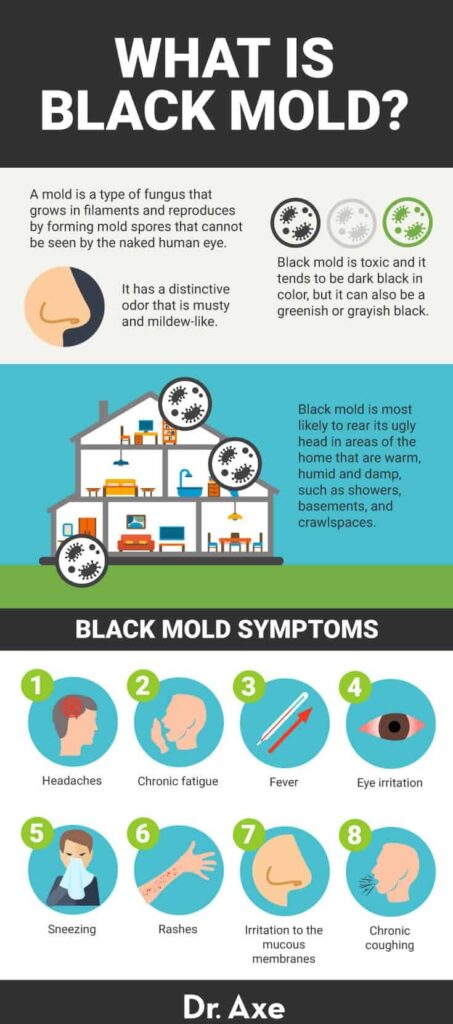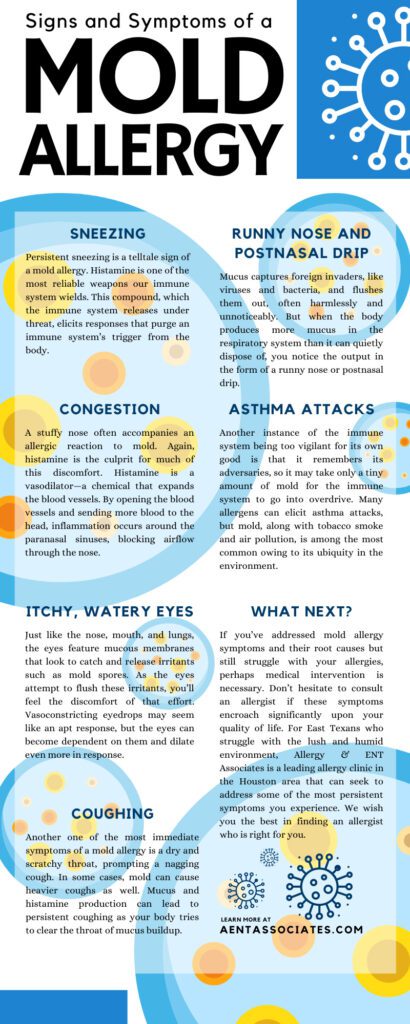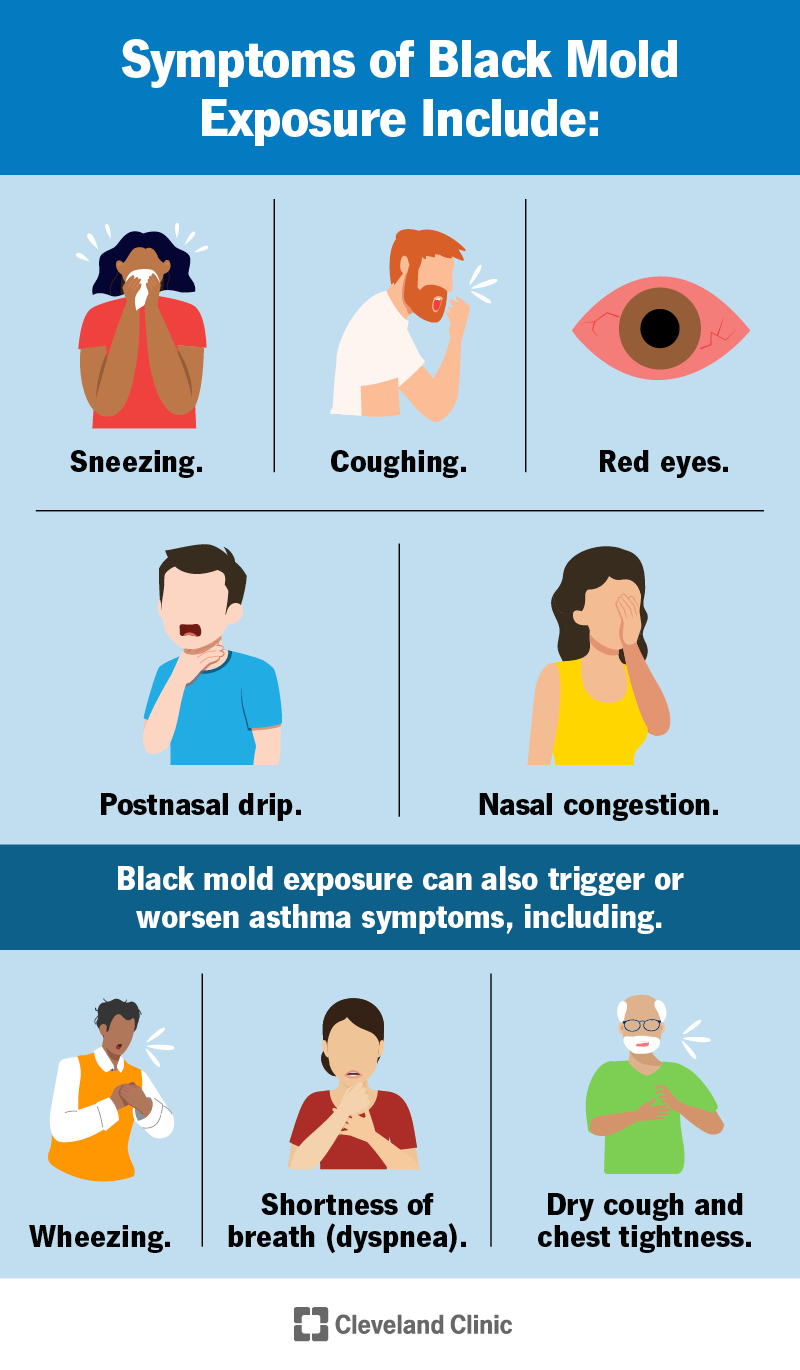In the article “Symptoms Of Too Much Mold Exposure: Knowing When To Seek Help,” you will learn about the various symptoms that can arise from excessive exposure to mold and how to identify when it’s time to seek professional assistance. Mold exposure can negatively impact your health, leading to respiratory issues, allergies, skin irritations, and even more severe complications. By recognizing the signs of mold exposure, you can take proactive steps to safeguard your well-being and seek the necessary help to address the issue effectively.
Respiratory Symptoms
Coughing
Excessive exposure to mold can lead to respiratory symptoms such as coughing. If you find yourself constantly coughing, especially in certain environments, it might be a sign that mold is present. Mold spores in the air can irritate your throat and lungs, triggering a persistent cough.
Wheezing
Wheezing is another respiratory symptom that can occur due to mold exposure. Wheezing is characterized by a whistling sound when you breathe, and it is typically caused by the narrowing of the airways. Mold spores can cause inflammation in the airways, leading to wheezing in sensitive individuals.
Shortness of Breath
Shortness of breath is a common symptom experienced by individuals exposed to excessive mold. Mold spores can directly affect the respiratory system, causing inflammation and irritation that makes it difficult to breathe. If you notice yourself feeling breathless or struggling to catch your breath, it is essential to consider the presence of mold as a potential cause.
Sore Throat
A sore throat can be another indication of mold exposure. Mold spores can irritate the throat, leading to discomfort, scratchiness, and pain. If you experience a persistent sore throat, particularly in specific environments or locations, it could be a sign of mold-related issues.
Sinus Congestion
Mold exposure can trigger sinus congestion, commonly known as a stuffy or blocked nose. Mold spores can enter the nasal passages and cause inflammation, leading to the swelling of the sinuses. This can result in difficulty breathing through the nose and a feeling of pressure or heaviness in the face.
Nasal Symptoms
Runny or Stuffy Nose
Excessive mold exposure can cause nasal symptoms, including a runny or stuffy nose. Mold spores can trigger an allergic reaction in some people, leading to increased mucus production and nasal congestion. If you constantly find yourself reaching for tissues or struggling to breathe through your nose, mold could be the culprit.
Frequent Sneezing
Frequent sneezing can be a common symptom of mold exposure. Mold spores can act as allergens and trigger sneezing as a protective mechanism to remove the irritant from the nasal passages. If you notice yourself sneezing more often, especially in certain environments, it may be worth investigating for the presence of mold.
Itchy or Watery Eyes
If your eyes feel itchy, irritated, or frequently watery, mold exposure might be the cause. Mold spores can irritate the eyes, leading to an allergic reaction. This can result in redness, itchiness, and excessive tearing. If you experience these symptoms, especially in specific locations or situations, mold exposure could be a possibility.
Nosebleeds
Nosebleeds can occur as a result of mold exposure for some individuals. Mold spores can irritate the nasal passages and cause drying and inflammation, which can lead to nosebleeds. If you notice frequent nosebleeds, it is worth considering the presence of mold in your environment as a potential cause.
Skin Symptoms
Skin Irritation
Exposure to mold can sometimes cause skin irritation. Mold spores can come into contact with the skin, leading to redness, itchiness, and general discomfort. If you notice unexplained skin irritation or rashes, particularly in locations where mold might be present (such as damp areas), mold exposure could be a factor.
Itchy Skin
Itchy skin is another possible symptom of mold exposure. Mold spores can trigger allergic reactions in some individuals, leading to itching and discomfort. If you find yourself constantly itching or notice a pattern of increased itching in certain environments, it is worth considering the possibility of mold exposure.
Rash
A rash can be a visible manifestation of mold exposure. Mold spores can cause an allergic reaction in some individuals, resulting in red, itchy patches on the skin. If you develop a rash that seems to coincide with certain environments or situations, it is crucial to explore the possibility of mold-related issues.
Hives
Hives, characterized by raised, itchy bumps on the skin, can also occur due to mold exposure. Mold spores can trigger an allergic reaction that manifests as hives in some sensitive individuals. If you notice recurring hives that seem to be connected to specific environments, mold exposure should be considered as a potential cause.
Neurological Symptoms
Headaches
Excessive mold exposure can lead to neurological symptoms, including headaches. Mold releases volatile organic compounds (VOCs) that can irritate the nervous system and trigger headaches in susceptible individuals. If you experience frequent headaches, especially in certain environments, mold exposure could be a contributing factor.
Dizziness
Dizziness can be another neurological symptom experienced by individuals exposed to mold. Mold spores and VOCs can affect the central nervous system, leading to feelings of lightheadedness or a spinning sensation. If you find yourself frequently feeling dizzy or unsteady, it is important to consider mold exposure as a potential cause.
Memory Problems
Memory problems can arise as a result of mold exposure. Mold toxins can affect cognitive function and memory in some individuals. If you notice a decline in your ability to remember things or have difficulty retaining information, it is worth exploring the possibility of mold-related neurological issues.
Difficulty Concentrating
Excessive mold exposure can also cause difficulty concentrating. The presence of mold spores and toxins in the environment can affect cognitive function and impair focus and attention. If you find yourself struggling to concentrate, especially in specific locations, mold exposure should be considered as a potential factor.
Fatigue
Fatigue is a common symptom experienced by individuals exposed to mold. Mold toxins can affect the body’s energy production and lead to feelings of exhaustion and low energy levels. If you constantly feel tired, even after getting enough rest, mold exposure might be a contributing factor.
Depression
Mold exposure can also impact mental health, potentially leading to symptoms of depression. The presence of mold and the associated health issues can cause emotional distress and contribute to the development or worsening of depressive symptoms. If you experience persistent feelings of sadness, hopelessness, or loss of interest, mold exposure should be considered as a potential factor.
Anxiety
Anxiety can be another mental health symptom associated with mold exposure. The presence of mold and the associated health risks can lead to heightened worry, fear, and anxiety. If you find yourself experiencing excessive anxiety, particularly in certain environments or situations, mold exposure might be a contributing factor.

Digestive Symptoms
Nausea
Nausea can occur as a digestive symptom due to mold exposure. Mold toxins can affect the digestive system and lead to feelings of queasiness and an unsettled stomach. If you frequently experience nausea, especially in specific environments, mold exposure should be considered as a potential cause.
Vomiting
In some cases, mold exposure can lead to vomiting. The toxins released by mold can irritate the digestive system and trigger episodes of vomiting. If you experience unexplained vomiting, particularly in situations where mold might be present, it is important to investigate for mold-related issues.
Diarrhea
Diarrhea can be another digestive symptom associated with mold exposure. Mold toxins can disrupt the normal functioning of the digestive system, leading to loose or watery stools. If you notice frequent episodes of diarrhea, especially in environments where mold might be present, mold exposure should be considered as a potential cause.
Abdominal Pain
Excessive mold exposure can cause abdominal pain in some individuals. Mold toxins can irritate the digestive system, leading to discomfort and pain in the abdominal region. If you experience persistent abdominal pain, particularly in locations where mold might be present, mold exposure should be explored as a potential factor.
Musculoskeletal Symptoms
Muscle Pain
Muscle pain can occur as a result of mold exposure in some individuals. Mold toxins can cause inflammation and lead to muscle aches and discomfort. If you notice unexplained muscle pain, especially in certain environments or situations, mold exposure should be considered as a potential cause.
Joint Pain
Joint pain can be a musculoskeletal symptom associated with mold exposure. Mold toxins can contribute to inflammation in the joints, leading to pain, stiffness, and reduced range of motion. If you experience persistent joint pain, particularly in locations where mold might be present, mold exposure should be investigated as a potential factor.
Muscle Weakness
Muscle weakness can also be a result of mold exposure. Mold toxins can affect muscle function and lead to feelings of weakness and fatigue. If you notice a decline in muscle strength or find yourself tiring easily, mold exposure could be a contributing factor.

Cardiovascular Symptoms
Irregular Heartbeat
Excessive mold exposure can impact the cardiovascular system and result in irregular heartbeats. Mold toxins can affect the electrical signals that regulate the heartbeat, leading to palpitations or arrhythmias. If you experience irregular heartbeats, it is essential to consider mold exposure as a potential cause and seek medical attention.
Chest Pain
Chest pain can occur as a cardiovascular symptom associated with mold exposure. Mold toxins can cause inflammation in the chest area, leading to discomfort or a tight, squeezing sensation. If you experience unexplained chest pain, particularly in environments where mold might be present, mold exposure should be considered and evaluated by a healthcare professional.
High Blood Pressure
In some cases, mold exposure can contribute to high blood pressure. Mold toxins can cause inflammation and affect blood vessel function, leading to elevated blood pressure levels. If you have uncontrolled or persistent high blood pressure, mold exposure should be explored as a potential factor in collaboration with your healthcare provider.
Allergic Reactions
Worsening Asthma Symptoms
Individuals with asthma may experience worsening symptoms due to mold exposure. Mold spores can act as triggers for asthma attacks, leading to increased coughing, wheezing, and difficulty breathing. If you have asthma and notice a decline in your respiratory function or increased asthma symptoms, mold exposure should be considered as a potential trigger.
Allergic Rhinitis
Allergic rhinitis, commonly known as hay fever, can be triggered by mold exposure. Mold spores can enter the nasal passages and trigger an allergic reaction, resulting in symptoms such as sneezing, runny nose, and itchy eyes. If you experience these symptoms in specific environments or situations, mold exposure could be a contributing factor.
Allergic Conjunctivitis
Mold exposure can also cause allergic conjunctivitis, an inflammation of the conjunctiva (the thin membrane covering the white part of the eye). Mold spores can irritate the eyes and trigger symptoms such as redness, itchiness, and excessive tearing. If you experience these symptoms, particularly in locations where mold might be present, mold exposure should be considered as a potential cause.
Anaphylaxis (Rare)
Although rare, severe mold allergies can potentially lead to anaphylaxis, a life-threatening allergic reaction. Anaphylaxis involves a rapid onset of symptoms, including difficulty breathing, swelling of the face or throat, a rapid heartbeat, and a drop in blood pressure. If you experience these severe symptoms, immediate medical attention is necessary.

Mental Health Symptoms
Mood Swings
Mold exposure can impact mental health, leading to symptoms such as mood swings. The presence of mold and the associated health issues can contribute to emotional instability and frequent changes in mood. If you find yourself experiencing significant mood swings, mold exposure should be considered as a potential contributing factor.
Irritability
Irritability can occur as a mental health symptom due to mold exposure. The presence of mold and the associated health issues can cause heightened sensitivity and irritability. If you find yourself becoming easily irritated or agitated, particularly in certain environments, mold exposure could be a contributing factor.
Panic Attacks
Panic attacks can be triggered by mold exposure for some individuals. The presence of mold and the associated health risks can lead to increased anxiety and panic attacks in susceptible individuals. If you experience sudden and intense bouts of fear or anxiety, it is worth considering the role of mold exposure in your symptoms.
Unexplained Anxiety
Mold exposure can contribute to unexplained anxiety in some individuals. The presence of mold and the associated health concerns can cause heightened worry or fear without an identifiable trigger. If you find yourself experiencing excessive or persistent anxiety, mold exposure should be explored as a potential contributing factor.
Chronic Fatigue Syndrome
Persistent Fatigue
Excessive mold exposure can contribute to chronic fatigue syndrome (CFS). Mold toxins can affect the body’s energy production and lead to persistent fatigue that is not relieved by rest. If you constantly feel tired, lack energy, and have difficulty engaging in daily activities, mold exposure could be a potential factor in the development of CFS.
Muscle Aches
Muscle aches can occur as a symptom of chronic fatigue syndrome associated with mold exposure. Mold toxins can contribute to inflammation and lead to widespread muscle pain. If you experience persistent muscle aches, especially in environments where mold might be present, mold exposure should be considered as a potential contributing factor to CFS.
Joint Pain
Joint pain can also be a symptom of chronic fatigue syndrome that arises from mold exposure. Mold toxins can cause inflammation in the joints, leading to pain, stiffness, and reduced range of motion. If you experience persistent joint pain, particularly in locations with mold exposure, mold-related CFS should be considered and evaluated by a healthcare professional.
In conclusion, excessive mold exposure can lead to a wide range of symptoms affecting various body systems. Respiratory symptoms such as coughing, wheezing, shortness of breath, sore throat, and sinus congestion can indicate potential mold-related issues. Nasal symptoms like a runny or stuffy nose, frequent sneezing, itchy or watery eyes, and nosebleeds can also be associated with mold exposure. Skin symptoms such as skin irritation, itchy skin, rash, and hives can occur due to mold exposure. Neurological symptoms like headaches, dizziness, memory problems, difficulty concentrating, fatigue, depression, and anxiety can be indicative of mold-related health issues. Digestive symptoms including nausea, vomiting, diarrhea, and abdominal pain can also arise from excessive mold exposure. Musculoskeletal symptoms like muscle pain, joint pain, and muscle weakness can be associated with mold exposure. Cardiovascular symptoms such as irregular heartbeat, chest pain, and high blood pressure can also be potential indicators of mold-related concerns. Allergic reactions like worsening asthma symptoms, allergic rhinitis, allergic conjunctivitis, and rare cases of anaphylaxis can occur due to mold exposure. Mental health symptoms such as mood swings, irritability, panic attacks, and unexplained anxiety can arise from mold-related issues. Additionally, chronic fatigue syndrome can develop as a result of mold exposure, characterized by persistent fatigue, muscle aches, and joint pain.
Recognizing these symptoms and being aware of the potential connection to mold exposure is crucial for seeking appropriate assistance. It is essential to consult with a healthcare professional to evaluate the symptoms, conduct relevant tests, and determine the best course of action for addressing mold-related health concerns. By understanding and identifying the symptoms of excessive mold exposure, you can take steps to mitigate the effects on your health and create a safer environment for yourself and your loved ones.

